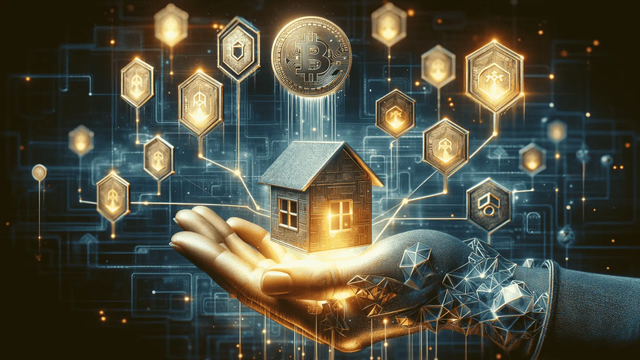In the evolving landscape of blockchain technology, real-world asset tokenization stands out as a revolutionary concept, bridging the gap between tangible assets and digital finance. Tokenization converts physical assets into digital tokens on a blockchain, facilitating new opportunities for investment, liquidity, and asset management. This blog delves into the nuances of real-world asset tokenization services, exploring their benefits, challenges, and future potential.

What is Real World Asset Tokenization?
Real-world asset tokenization involves creating a digital representation of a physical asset on a blockchain. These assets can range from real estate, commodities, and art to securities and intellectual property. Each token represents a fraction of the asset, making it possible for investors to own a piece of high-value assets that were previously out of reach.
The Mechanics of Tokenization
The process begins with the selection of an asset, followed by its valuation. Legal structures are then established to ensure the asset's ownership and regulatory compliance. Next, the asset is digitized and divided into tokens. These tokens are then issued on a blockchain platform, where they can be bought, sold, or traded.
Asset Selection and Valuation: Identifying and appraising the asset to determine its market value.
Legal and Regulatory Framework: Setting up a legal entity to hold the asset and ensuring compliance with relevant laws.
Digitization and Token Creation: Using smart contracts to create digital tokens that represent fractional ownership of the asset.
Token Issuance and Trading: Distributing the tokens to investors through a blockchain platform.
Benefits of Tokenization
Increased Liquidity: Tokenization transforms illiquid assets into liquid ones by enabling fractional ownership and easier transferability.
Accessibility: Investors can buy smaller shares of high-value assets, democratizing access to investments that were previously available only to wealthy individuals.
Transparency: Blockchain technology ensures transparent and immutable records of ownership and transactions.
Reduced Costs: By eliminating intermediaries, tokenization can reduce transaction fees and administrative costs.
Faster Transactions: Blockchain’s decentralized nature enables quicker settlement of trades compared to traditional methods.
Use Cases of Tokenization
Real Estate: Properties can be tokenized, allowing investors to purchase fractions of buildings or land, thus diversifying their portfolios with real estate assets.
Art and Collectibles: High-value art pieces and collectibles can be tokenized, enabling multiple investors to own shares of valuable items.
Commodities: Precious metals, oil, and agricultural products can be tokenized, facilitating easier trading and investment in these markets.
Securities: Stocks, bonds, and other securities can be represented as tokens, streamlining the issuance and trading processes.
Challenges and Considerations
Despite its potential, tokenization faces several challenges:
Regulatory Uncertainty: Different jurisdictions have varying regulations regarding tokenized assets, creating a complex legal landscape.
Technological Barriers: Ensuring the security and scalability of blockchain platforms is crucial to prevent fraud and handle large transaction volumes.
Valuation and Liquidity Issues: Determining the true value of tokenized assets and maintaining liquidity can be challenging, especially for niche markets.
Market Acceptance: Gaining the trust and acceptance of investors and institutions is essential for widespread adoption.
Future Prospects of Tokenization
The future of real-world asset tokenization looks promising as technology and regulations evolve. With increasing interest from institutional investors and advancements in blockchain technology, tokenization is set to transform various sectors.
Enhanced Regulatory Frameworks: As governments and regulatory bodies gain a better understanding of tokenization, clearer guidelines will emerge, fostering greater trust and adoption.
Technological Advancements: Improved blockchain technologies, including more scalable and secure platforms, will enhance the feasibility of large-scale tokenization.
Mainstream Adoption: As awareness grows, more investors and institutions will recognize the benefits of tokenization, leading to greater market acceptance.
Innovative Financial Products: Tokenization will give rise to new financial instruments and investment opportunities, further diversifying the financial landscape.
Conclusion
Real-world asset tokenization represents a paradigm shift in the way we perceive and manage investments. By bridging the gap between physical assets and digital finance, tokenization offers unprecedented opportunities for liquidity, accessibility, and transparency. However, navigating the challenges of regulation, technology, and market acceptance will be crucial for its successful implementation. As we look to the future, the continued evolution of blockchain technology and regulatory frameworks will play a pivotal role in unlocking the full potential of asset tokenization, paving the way for a more inclusive and efficient financial ecosystem.